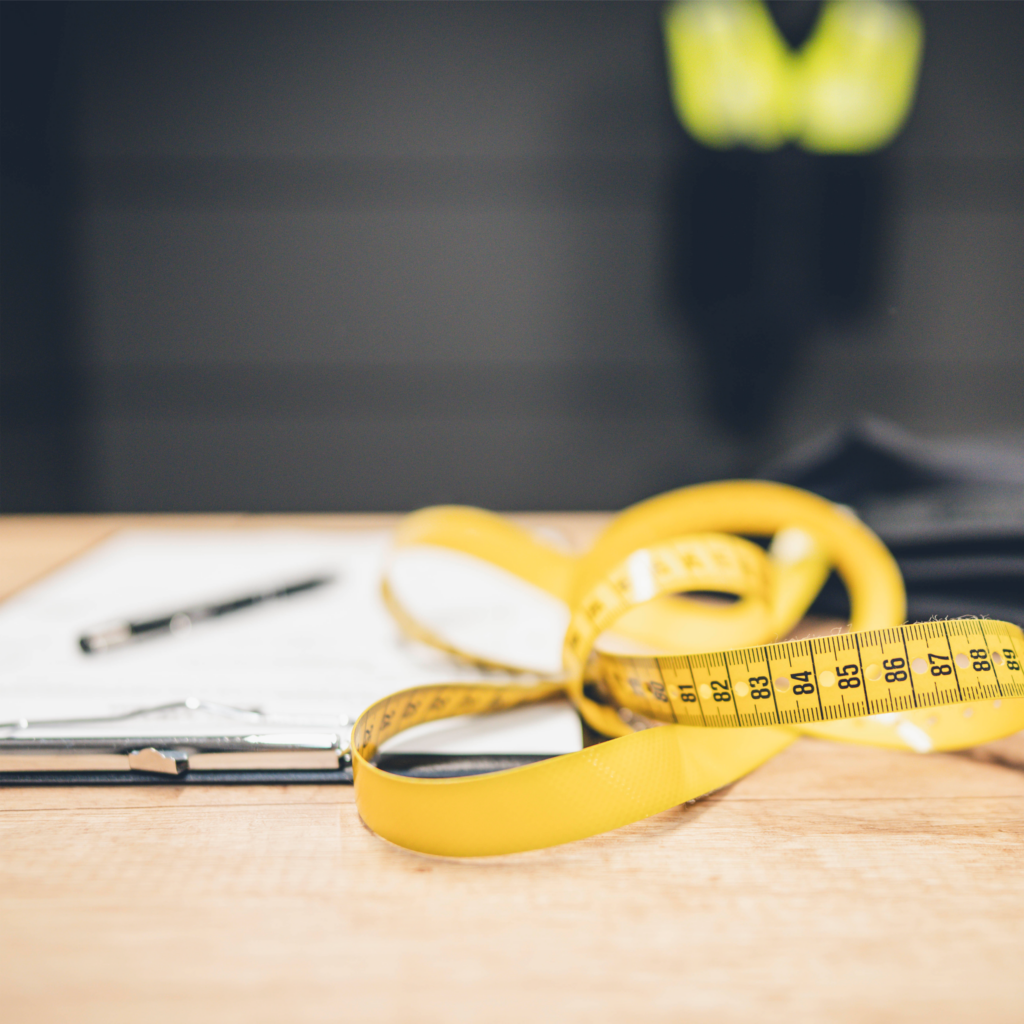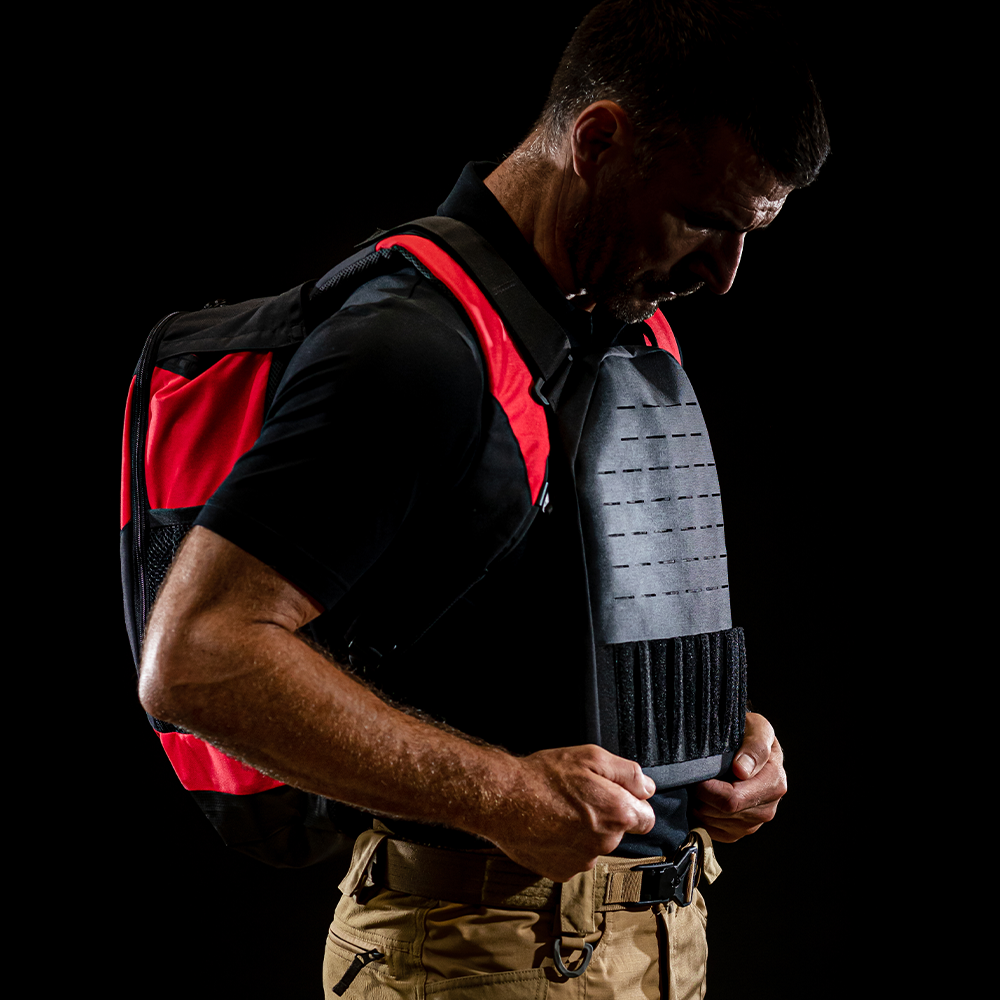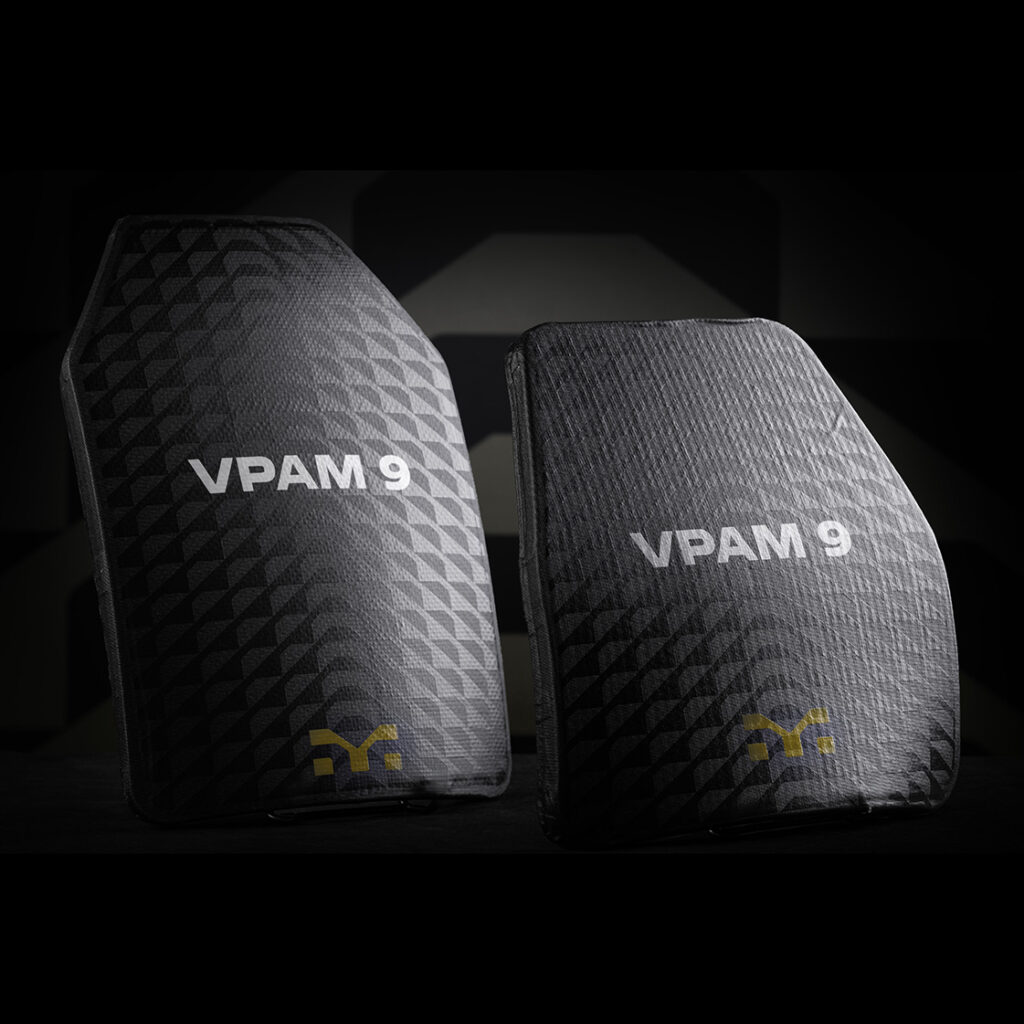
Waistcoat versus plate carrier: two protection systems for different operational situations
In the world of modern security and operations, body protection systems are no longer just passive protective devices but active platforms for equipment, communication and tactical flexibility. The focus is on two systems in particular: waistcoats and plate carriers. Both systems provide protection against ballistic threats and serve as platforms for equipment, but differ significantly in terms of structure, purpose and tactical application.
Similarities and differences
The requirements for personal protective equipment have changed significantly in recent years. Whereas the focus in the past was on discrete protection, today’s environments call for modular systems that are flexible enough to adapt to various threat situations and deployment profiles.
Both systems, waistcoats and plate carriers, are designed to protect the wearer from firearms and other hazards. They provide modular attachment options for equipment and can be individually configured. The key difference lies in the level of protection, the way they are worn and the context in which they are used.
- Waistcoat: Designed for everyday use, often in civilian or police contexts, with a focus on comfort, discretion and modular expandability.
- Plate carriers: Designed for military or high-risk operations, with a focus on maximum protection with hard ballistic plates and use as tactical equipment carriers.
Waistcoats for everyday use
Waistcoats are ideal for police patrols, civilian security services and authorities with covert or semi-public operational profiles. They offer a balance of protection, comfort and tactical flexibility without limiting mobility.
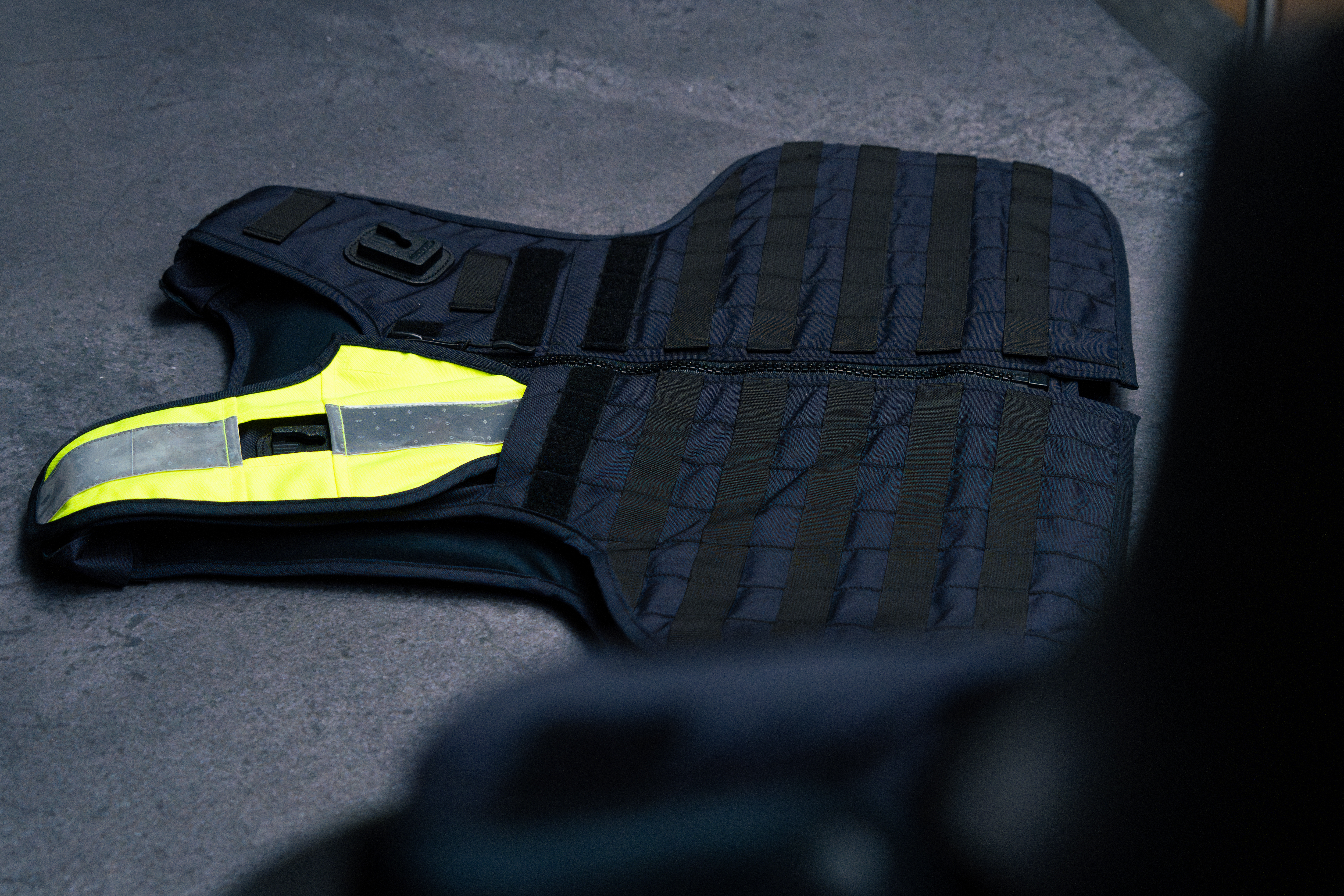
Design & materials
Waistcoats are made of robust outer materials such as Cordura®, combined with hybrid fabrics for comfort and ventilation. Their integrated soft ballistic inserts are based on aramid fibres or UHMWPE, which provide protection against small arms. Stitch protection can be integrated as a further option, e.g. in the form of chain mail or multi-layer fabric.
Safety concepts
Ballistic fabrics in vests provide protection against small arms in accordance with international standards such as VPAM, NIJ or CAST (UK testing standard). The level of protection can be enhanced with modular hard ballistic plates.
Modularity and customisation
Fastening systems such as MOLLE, hook and loop, and laser cut allow body armour to be individually configured:
- MOLLE systems for robust equipment carriers
- Laser-cut systems for weight reduction
- Hook-and-loop systems for rapid adjustments
Visibility can also be adapted as desired: from discreet designs to high-vis elements with fixed or removable patches with lettering. Vests are designed to be adapted to different roles and areas of deployment. Since the fit is crucial for comfort and protection, many models are available in different sizes and with gender-specific cuts. New trends such as integrated body cams or lower abdominal protection show how vests have developed into a multifunctional platform.
Plate carriers for high-risk scenarios
Plate carriers are ideal for military, police, special forces and high-risk operations. They provide protection against firearms and serve as carriers for mission-critical equipment.

Design and materials
Plate carriers are designed to accommodate hard ballistic plates that are usually rated to SAPI or NATO standards. The plates are made of ceramic material or polyethylene and protect against rifle ammunition and fragmentation. The carrier is lightweight, robust and modular.
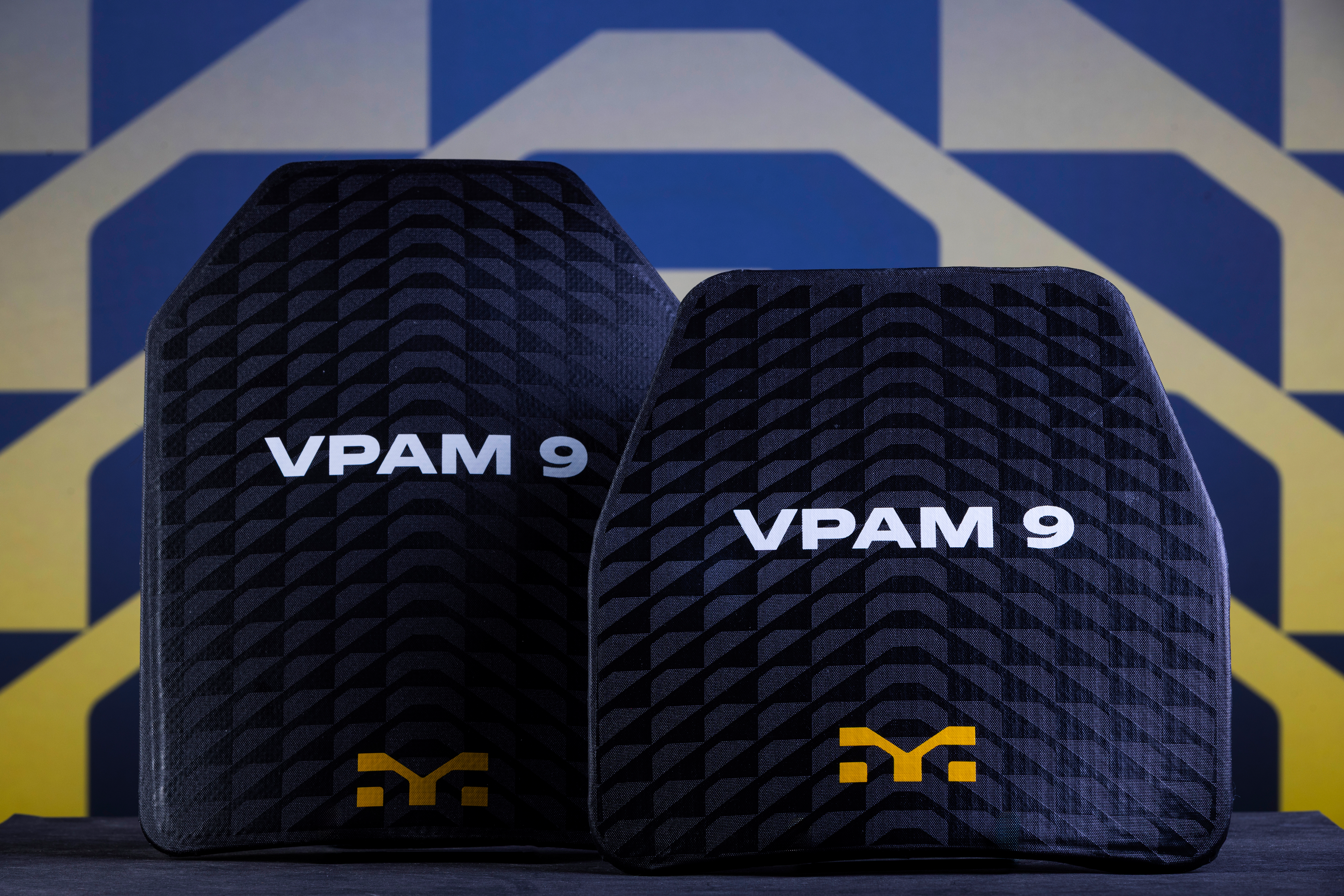
Safety concepts
The protection focuses on what is referred to as the ‘cardiac box’, i.e. the heart, lungs and great blood vessels. Side panels can be added as desired. The correct positioning is crucial:
- Top edge: Sternum (jugular notch)
- Bottom edge: Above the navel
- Shoulder straps: Tight but flexible
- Cummerbund: Stable, without constriction
Structure and variants
In contrast to heavy protective vests, plate carriers focus on protecting vital organs in the chest and back area. They are lighter and more flexible. There are classic models with front and rear plates, modular systems with side plates, and specialised variants for maritime, alpine or covert use.
One example is the HYVE system, which combines a plate carrier with a vest. The HYVE is ideal for applications where the waistcoat can be upgraded with the addition of a plate carrier if the threat level abruptly rises. An insert in the front ensures the equipment is unchanged on the vest without compromising the protective surface.
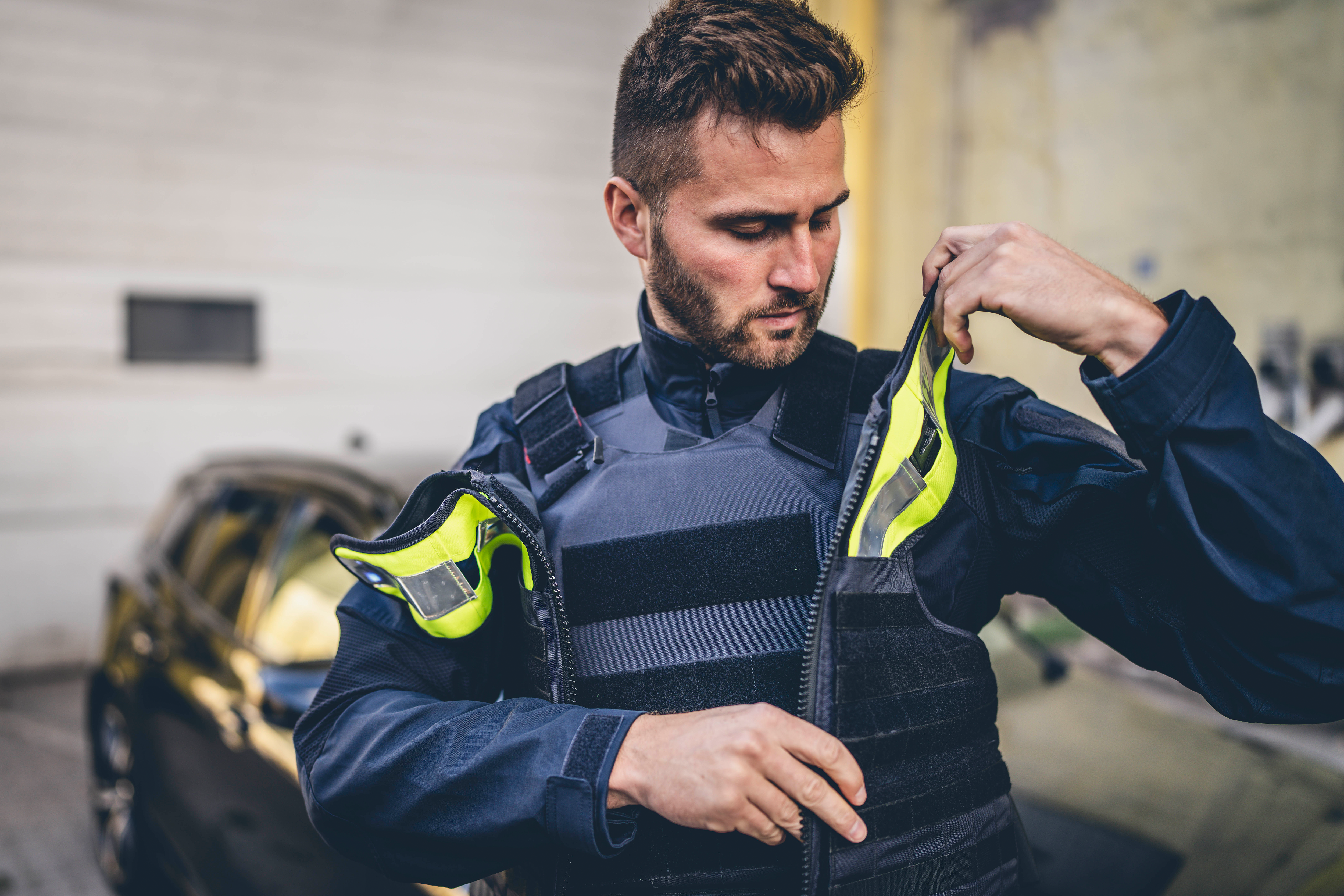
Plate sizes and wearing instructions
Hard ballistic plates (e.g. to SAPI or NATO standard) must be positioned correctly: top edge at the sternum, bottom edge above the navel. The shoulder straps and cummerbund should fit tightly without restricting mobility.
Care and maintenance
The carrier should be cleaned with a mild detergent. Ceramic plates are particularly sensitive. Any cracks or knocks may impair the protective effect. Regular inspections and compliance with the manufacturer’s instructions regarding the warranty period are essential.
Summary
Waistcoats and plate carriers each offer specific benefits. Waistcoats are ideal for flexible applications with medium protection requirements. Plate carriers are the best choice for high-risk scenarios where maximum protection and integration of equipment are required. Both systems can be adapted on a modular basis and offer an optimal balance between security, mobility and operational capability based on the right selection, configuration and maintenance.
Waistcoats and plate carriers are not competing systems but complementary solutions for different operational situations:
| Attribute | Waistcoat | Plate carrier |
| Protection class | Soft ballistics, hard ballistics (optional) | Hard ballistic plates |
| Modularity | High, incl. visibility elements | High, focused on equipment carriers |
| Comfort | High wearing comfort | Functional, but less comfortable |
| Areas of deployment | Civilian, police, covert | Military, Special Forces, high-risk |
| Weight | Light to medium | Medium to heavy |
| Maintenance | Low | High for ceramic panels |
The choice between vests and plate carriers depends not only on the threat scenario, but also on tactical requirements, wearing time, visibility and equipment requirements. In many cases, a combination of both systems is the most effective solution.
Images and graphics
Mehler Protection, Mehler Vario System GmbH (all rights reserved, 2025)
